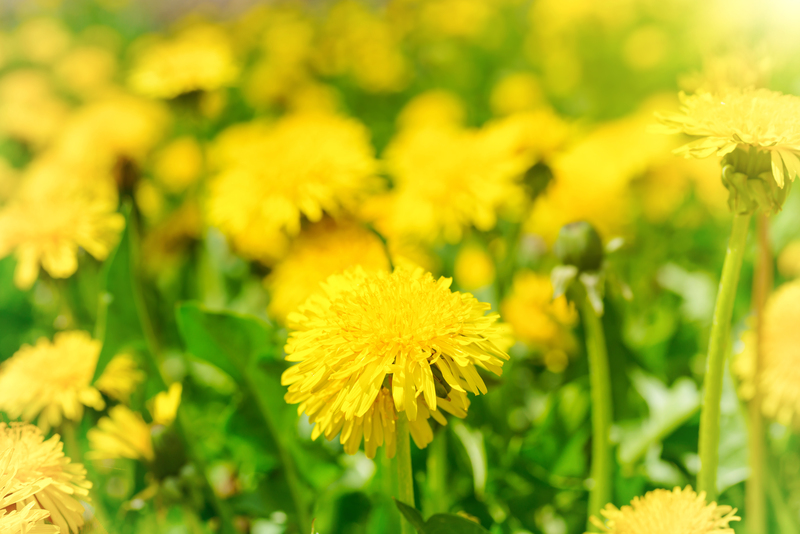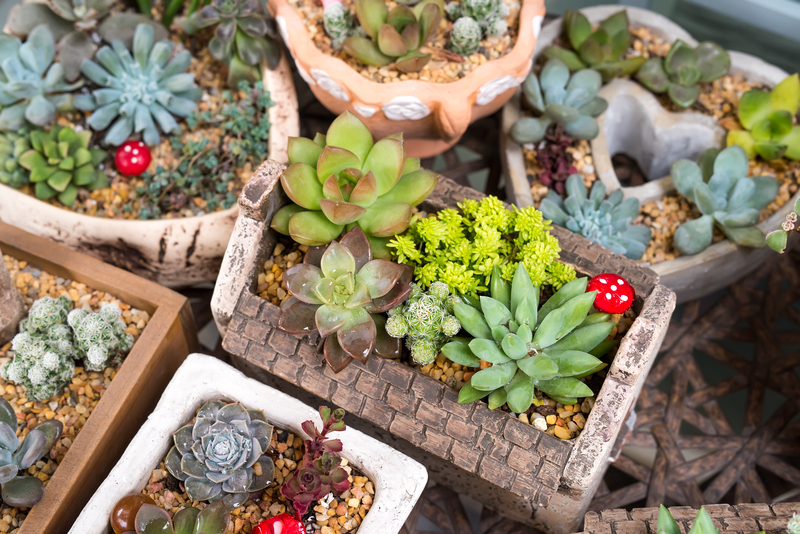Make Your Garden a Secure Playground for Kids
Posted on 07/09/2025
Make Your Garden a Secure Playground for Kids: Ultimate Safety and Fun Guide
Is your garden a haven for your children to explore and play? Making your garden a secure playground for kids is every parent's dream, but it requires thoughtful planning and maintenance. This comprehensive guide covers everything you need to know to create a safe, stimulating, and fun outdoor play area for your little ones. Discover key safety measures, imaginative play equipment ideas, and top tips that ensure your family garden is both engaging and secure for all ages.

Why Prioritize Garden Safety for Children?
Children are naturally active and curious, making gardens the perfect spot for creative play and exercise. However, outdoor spaces can also present unexpected hazards. By transforming your garden into a secure playground for kids, you not only protect your children from accidents but also encourage them to spend more time outdoors, nurturing their physical, emotional, and social development.
First Steps: Assessing Your Garden's Safety
Analyze the Space
- Check for hazards: Remove sharp tools, fragile pots, and unnecessary clutter that could injure a child.
- Identify poisonous plants: Many attractive plants like foxglove, oleander, and lily of the valley can be toxic if ingested.
- Review garden structures: Inspect fences, sheds, and garden furniture for stability and potential risks such as splinters or protruding nails.
Evaluate Existing Play Equipment
- Check for wear and tear: Swing sets, slides, and trampolines should be inspected for rust, loose bolts, or broken components regularly.
- Surfacing: Ensure play equipment is installed over a suitable impact-absorbing surface such as grass, rubber mulch, or safety mats.
Tip: Keep a comprehensive checklist to inspect your garden for potential risks at least once every season.
Essential Features for a Secure Garden Playground
Safe Boundaries and Fencing
- Secure perimeter fencing: A sturdy fence at least 1.2 meters high prevents children from wandering off and keeps out stray animals.
- Lockable gates: Install secure latches and locks on garden gates, and make sure they self-close behind you.
- Visibility: Keep boundaries clear of bushes or sheds that could block your view of the entire play area.
Non-toxic and Child-friendly Plants
- Choose plants such as sunflowers, pansies, or marigolds, which are safe and add vibrant color to your garden.
- Avoid spiky, thorny, or poisonous plants: Remove cacti, holly, and yew to prevent injuries or poisoning.
Safe Ground Surfaces
- Soft landings: Equip play zones with safety surfacing like rubber tiles, bark chips, or artificial grass to cushion falls.
- Non-slip paths: Install paving stones with rough textures and ensure walkways are level and clear of debris to prevent trips and falls.
Shade and Weather Protection
- Install shade structures: Use pergolas, sail shades, or plant fast-growing trees for natural shade, protecting children from harmful UV rays.
- Water play safety: Provide shaded areas near paddling pools or sandpits to limit sun exposure during outdoor play.
Creative Ideas for a Safe and Exciting Garden Playground
Designing Activity Zones
Creating designated zones makes it easier to maintain safety and order. Consider the following sections for your kids' garden paradise:
- Active play area: Swings, slides, climbing frames, and balance beams for physical development.
- Imagination & quiet zone: Teepees, fairy-tale huts, or a reading nook for relaxation and creative play.
- Nature & exploration section: Raised vegetable beds, butterfly gardens, or bug hotels to fuel curiosity.
- Water & sand play: Sandpits, splash pads, or shallow water tables provide endless tactile fun--ensure supervision at all times!
Incorporate Safe Play Equipment
- Choose age-appropriate gear: Select climbing frames and swings appropriate to your child's size, age, and ability.
- Anchor all equipment: Secure slides, swings, and trampolines firmly to the ground to avoid tipping.
- Soft edges and corners: Opt for rounded, padded edges to minimize injury during play.
Encourage Nature-Based Play
- Build a mud kitchen for messy fun and sensory learning.
- Use logs, stumps, or stepping stones as natural, low-height balancing activities.
- Plant sunflowers kids can measure or hidden fairy doors for magical discovery.
Child Garden Security: Water, Tools, and Sensitive Areas
Water Safety
- Ponds and water features: Cover ponds with mesh or fencing or, ideally, avoid open water sources altogether if you have very young children.
- Paddling pools: Always supervise play and empty movable pools after use to prevent accidental drowning.
Tool and Chemical Storage
- Keep sharp tools, mowers, and hazardous chemicals in a locked shed or garage out of children's reach.
- Choose natural fertilizers and pesticides where possible to minimize toxic exposure.
Compost and Rubbish Areas
- Keep compost bins securely closed, as they can attract vermin and harbor bacteria.
- Enclose rubbish bins to prevent curious hands from exploring unsafe materials.
Maintenance: Keeping Your Playground Garden Safe Year-Round
Regular Inspection Routine
- Inspect play equipment, fences, and surfacing for signs of wear or damage every month.
- Address splinters, rust, or rot as soon as they appear to keep the play area secure for kids.
- Clear moss and debris from pathways and play surfaces to prevent slips.
Clean and Tidy
- Trim plants to maintain clear sight lines and remove tripping hazards.
- Keep play equipment clean using mild, child-friendly detergents to prevent the growth of harmful bacteria.
- Store toys and outdoor gear away securely after each use.
Teaching Children About Garden Safety
Beyond physical measures, educate your children about the basics of garden safety:
- Set clear boundaries: Explain which parts of the garden are off-limits.
- Plant identification: Teach kids not to touch or eat unknown plants, berries, or mushrooms.
- Tool use: Involve older children in gardening but teach proper handling of tools and sharp objects.
- Supervision: Remind children that an adult should always be present during play, especially for younger kids.
Extra Security: Smart Solutions for a Child-Safe Garden
- CCTV or baby monitors: Use wireless cameras for extra peace of mind when children play outside.
- Motion sensor lights: Illuminate dark corners to reduce the risk of trips and make it easier to supervise evening play.
- Outdoor first aid kit: Have a well-stocked kit on hand to deal with minor injuries.
Benefits of a Secure Outdoor Playground for Children
- Boosted physical development: Active play supports bone, muscle, and coordination growth.
- Stronger immunity: Exposure to fresh air and sunshine increases Vitamin D levels and overall health.
- Enhanced imagination: Outdoor activities foster creativity, independence, and teamwork among siblings and friends.
- Parental peace of mind: Knowing your garden is a safe environment for kids allows you to relax and watch them thrive.

Frequently Asked Questions: Keeping Kids Safe Outdoors
- How high should my garden fence be for child safety?
A garden fence should be at least 1.2 meters (about 4 feet) high to deter climbing and provide a physical boundary. - Which garden plants are safe for children?
Opt for sunflowers, marigolds, pansies, nasturtiums, and herbs like mint or basil. Avoid any plant with toxic leaves, berries, or sap. - Can I have a pond in a child-safe garden?
It's safest to avoid open water with young kids; otherwise, use strong mesh covers and high fencing, and always supervise children near water features. - What is the best play surface for a child's garden playground?
Rubber tiles, bark mulch, and artificial grass are cushioned options that absorb impact and are low maintenance.
Conclusion: Build Your Perfect, Safe Garden Playground
Transforming your garden into a secure playground for kids is a rewarding project that enhances your children's wellbeing and happiness. Through careful planning, regular maintenance, and engaging design, your outdoor space can become a treasured site for safe adventure and learning. With these actionable steps and safety measures, you're setting the foundation for years of joyful, worry-free play right outside your door.
Start today--because every child deserves a magical, secure garden playground to cherish and call their own.

